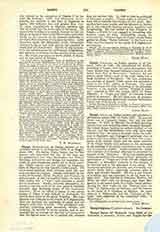

Campi, BERNARDINO, an Italian painter of the Lombard School, b. at Cremona, 1522; d. at Reggio, about 1590. His father, Pietro Campi, was his first teacher and instructed the boy in his own art, the goldsmith’s; but when Bernardino saw Titian‘s drawings, and prints, and designs for tapestries, the youth at once abandoned plastic art to study painting. Giulio Campi was his teacher at Cremona; later, at Mantua, he was Ippolito Corta’s pupil. He commenced painting when nineteen years old, and soon excelled his masters. Deeply impressed by the works of Correggio, Titian, Raphael, and Romano, he endeavored—as did his teacher Giulio—to unite all their merits into a “style” and establish a standard of excellence. Finally, however, Bernardino acquired a vigorous style of his own, painted excellent portraits, and decorated many of the Lombardy churches. When he added a Caesar to the eleven Caesars of Titian it was difficult to distinguish his picture from those of the great Venetian. His masterpiece is at Cremona in the cupola of S. Sigismondo. Here are depicted the multitude of saints and the blessed, with their symbols. This prodigious composition, exhibiting great invention, variety, and harmony, he finished in seven months; and so successfully did he manage the drawing and perspective that the figures seem to be of natural size, whereas they are ten feet high. In 1580 or 1584 he published at Cremona a quarto, “Parere sopra la pittura”, a book full of valuable information for the artist. Bernardino had many pupils, and his influence on Italian art in the sixteenth century was most healthful and invigorating. He was buried in San Prospero, at Reggio, a church he was engaged in decorating with frescoes when he died. Noteworthy among his works are the “Descent from the Cross” in the Brera gallery at Milan, “Mater Dolorosa” in the Louvre at Paris, and the frescoes in the cupola of S. Sigismondo at Cremona.
LEIGH HUNT

